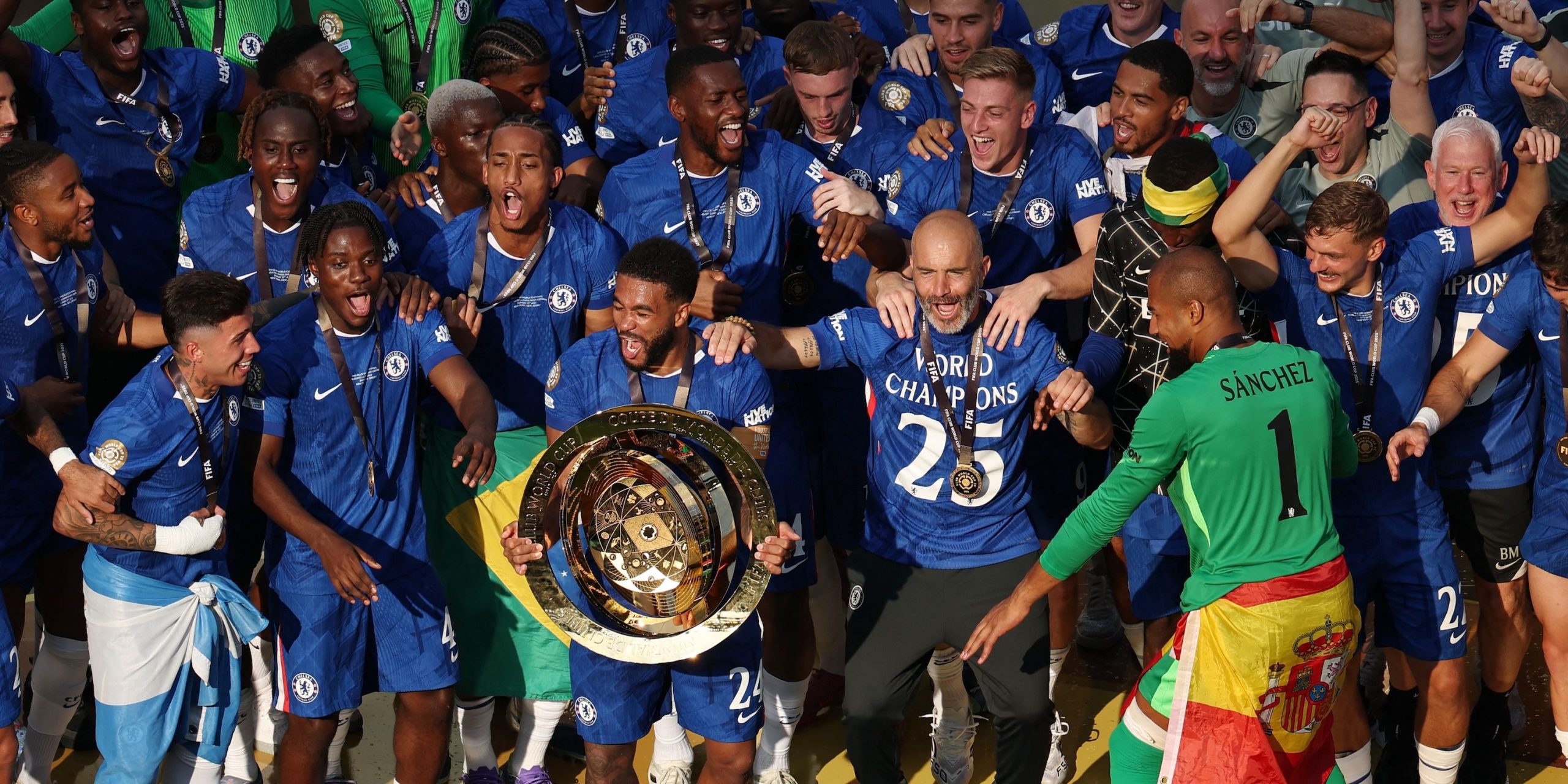Chelsea’s return to the Champions League ended in disappointment as they fell 3-1 away to Bayern Munich in their opening group fixture.
It was the club’s first appearance in the competition since 2023, and the performance suggested Enzo Maresca’s young squad still has much to learn about competing at Europe’s top table.
Chelsea entered the Allianz Arena buoyed by a successful 2024/25 campaign, finishing fourth in the Premier League and lifting the Europa Conference League.
They added the Club World Cup over the summer, dispatching PSG 3-0 in the final, but the match against Bayern proved far more demanding.
With only 117 Champions League appearances across their entire 24-man squad, their inexperience showed in key moments.
Switching off at a throw-in allowed Michael Olise the time to deliver a cross that Trevoh Chalobah turned into his own net, before Moises Caicedo brought down Harry Kane in the box.
Bayern were ruthless, and while Chelsea did show flashes of promise, the experiment of deploying Reece James in midfield again raised questions about whether it is a strategy that can truly succeed at this level.
Reece James' role in Munich
At 25, Reece James is the only survivor from Chelsea’s 2021 Champions League-winning side, and his presence in the squad offers both quality and leadership.
Yet his career has been repeatedly interrupted by injuries – more than 140 matches missed – leaving doubts about whether he can sustain the rhythm of playing twice a week in both domestic and European competition.
Against Bayern, James was positioned in midfield alongside Moises Caicedo, while Malo Gusto filled in at right-back.
The idea was to utilise James’ technical quality and tactical awareness in central areas, but the execution was less convincing. Across 68 minutes on the pitch, James touched the ball just 35 times and attempted 27 passes, completing 22 of them (81%).
He failed to register a single key pass and did not win either of his two ground duels, while also conceding possession too cheaply.
His final rating of 6.1 reflected a subdued display that neither shielded Chelsea’s defence nor offered enough progression going forward.
The wider concern is that James’ strengths as a full-back are being muted in midfield. Where Chelsea need dynamism and ball-winning, the skipper struggled to impose himself.
Chalkboard
Football FanCast’s Chalkboard series presents a tactical discussion from around the global game.
It is no surprise that he was replaced by Andrey Santos midway through the second half.
Andrey Santos: A better Fit in midfield
The introduction of Andrey Santos, a 21-year-old Brazilian midfielder, gave Chelsea fresh energy in the second half.
Santos, who returned from a successful loan at Strasbourg, where he played 45 times and contributed 12 goals and five assists, is starting to prove he belongs on this stage.
Analyst Ben Mattinson has described him as a “duel monster” in midfield – a description that speaks to both his physicality and presence.
Santos has already demonstrated qualities that align more closely with Chelsea’s needs in the middle of the pitch: aerial strength, ball progression, composure in possession, and a natural tackling instinct.
These attributes showed during his 32 appearances last season, where he produced 13 goal involvements compared to James’ two in 19 matches.
The statistical comparison underlines why Santos might be the more natural option in midfield.
Andrey Santos – 2024/25
Matches Played
32
Goals
10
Assists
3
Progressive Carries
29
Progressive Passes
149
Source: FBRef
He averaged 3.47 tackles per 90, far outweighing James’ 0.85, and also registered more blocks (1.45 vs. 1.19).
Going forward, Santos was more efficient, with a 34.8% shot-on-target rate compared to James’ 27.3%. He also averaged twice as many shots on target per 90 (0.50 vs. 0.25).
In terms of progression, James does carry an edge in passing distance (370.8 metres per 90 vs. Santos’ 247.9) and averaged slightly more progressive passes (5.42 vs. 4.70).
However, Santos offered greater balance by combining forward passing with ball-carrying, recording 0.91 progressive carries per 90 compared to James’ 0.59.
His creativity was also marginally superior, averaging 1.77 shot-creating actions per 90 compared to James’ 1.52.
These numbers suggest Santos is not just a destroyer, but a midfielder capable of impacting both phases of play – regaining possession and driving Chelsea into attacking positions.
At just 21 and already capped four times by Brazil, his trajectory looks aligned with Chelsea’s long-term project.
Chelsea’s young squad will inevitably face teething problems in Europe, as the defeat in Munich showed.
Errors at the back cost them dearly, but the midfield balance was another decisive factor.
James, while a superb player when fit, may not be the answer in the middle. His injury history suggests that continuing the experiment risks undermining Chelsea’s progression.
Andrey Santos, by contrast, brings the blend of steel and skill that European nights demand.
His tackling, ball progression, and composure under pressure offer a profile Chelsea have been missing since N’Golo Kanté’s departure.
Deploying Santos in his natural role could allow James to return to right-back, where his qualities are maximised, and help Chelsea find the balance they lacked against Bayern.
